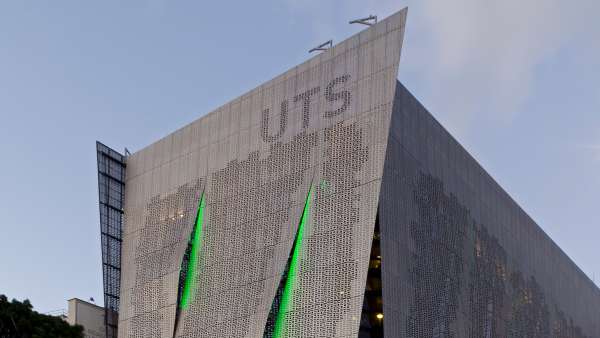As 2021 drew to a close, there were some reasons to be optimistic about the world’s efforts to tackle climate change.
Large fund managers were beginning to divest from fossil-fuel related companies, activists were using the legal system to help drive a reduction in emissions, and in some countries, governments were finally taking action to protect forests.
In Australia, one bright spot emerged in the tertiary education sector. The Australian Technology Network of Universities announced its members had collectively cut their carbon emissions by nearly half over the previous 14 years.
Curtin University, RMIT University, University of South Australia, and University of Technology Sydney had significantly outperformed a collective 25% target they set in 2009.
The impressive result was the culmination of more than 12 months of technical analysis and a comprehensive emissions reduction strategy designed by the Institute for Sustainable Futures (ISF), combined with some astute advocacy.
Early advocacy led to results
For some of the people who worked on the program, the emissions cuts are all the more amazing because of the lack of urgency around the climate change debate in Australia when the program was first conceived.
“We started in 2008,” remembers Chris Riedy, Professor of Sustainability Transformations and Director of Graduate Research at ISF.
“Cutting your emissions was a really hard case to make back then. Climate change was only just starting to get some traction and university facilities managers, who up to that point had been tasked with making buildings run, were now being asked to optimise them in completely different ways," explains Professor Riedy.
“We were asking them to do something that wasn’t in their experience.”
Things that are today commonplace, such as conducting regular energy audits, back then were not part of the corporate or institutional mindset.
The ATN, which at the time also included Queensland Institute of Technology, was already advocating and shaping policy outcomes with all levels of government. Their academic staff were leaders in climate change fields, so the next obvious step was for the universities to work together to tackle their own greenhouse gas (GHG) emissions.
An analysis-led approach
The Network’s first step was to commission ISF to determine a shared target.
More than a year of technical analysis by ISF and negotiations among the universities followed, culminating in an ambitious target of cutting the ATN’s aggregate GHG emissions to 25% below 2007 levels by 2020.
At the time, very few Australian universities had established GHG reduction targets and the ATN sought to demonstrate leadership in the university sector through the initiative.
It was a complicated process involving multiple reviews, workshops and adjustments, says Professor Riedy.
“At that time, getting organisations to commit to targets that were in line with the climate science was very difficult because those targets would have been very high,” he says.
“There was a constant back and forth, pushing and pulling, as we tried to show facilities managers and university hierarchy that they could cut their emissions cost effectively. Eventually, we reached a point that everyone was comfortable with.”
The 25% target was supported by a comprehensive emissions reduction strategy that prioritised energy saving measures and adoption of low-carbon energy sources.
GHG inventories were prepared for each university, along with scenario modelling, individual university reduction strategies, university capital works, and policy developments, for example, increasing the percentage of grid electricity supplied via renewable sources.
At the core of the ATN commitment was $20 million in investment to reducing emissions through efficiencies, which paid off financially in the medium-term through lower energy bills.
When ISF did the original calculations, it considered any likely expansion of member campuses that would increase emissions. More buildings were constructed than had been expected but the emissions reduction target was still met.
The early work was intensive. ISF held workshops with facilities managers at each of the universities and based on those findings, wrote a series of briefing papers about targets and pathways to reach them. ISF looked at what other universities were doing, what the science said needed to be done, and what options were available to the ATN to reduce emissions.
“We developed abatement cost curves which looked at all the opportunities to reduce emissions and compared them on a single metric of dollars per tonne of carbon that they would reduce,” says Professor Riedy.
“We then used that curve to show how much it would cost to reach various targets.”
So-called "low hanging fruit" was targeted first – installing more energy efficient lighting, replacing old chillers on air conditioning units and so on. ISF also encouraged the universities to construct any new buildings to high energy efficiency levels using the Green Building Council of Australia’s green star rating system.
In the end, four of the five universities committed to 4 green star rating for new and refurbished buildings, and all the universities made commitments to green power.
“A lot of the energy efficiency has a negative cost because it reduces your energy bill, so we really pushed energy efficiency as the first thing to do,” says Professor Riedy.
“Through rigorous analysis, we demonstrated the ATN could reach the targets without blowing budgets, and that it would be a good thing for the universities financially as well as having all the marketing benefits that come with reducing your carbon footprint.
“Because we are an institute of sustainable futures, we took on a bit of an advocacy role of convincing the universities to adopt stronger targets than they initially felt comfortable with.”
Leading the way for institutions approaching emissions reduction
The work done by ISF and the ATN demonstrated to the wider tertiary sector and institutions and corporates what could be achieved.
Having the five universities involved added a competitive element but the key was demonstrating that going green didn’t have to be a cost, it could pay for itself if you were smart about it, and we supplied the data to back that up.
– Professor Chris Riedy, ISF
“There was a lot of peer learning where one university might try something on a chiller system, or install a new lighting system, and another ATN member would copy it. It was like a living laboratory,” recalls Professor Riedy.
By identifying individual champions of climate change within the ATN, ISF kept the whole process moving, and bolstered the resolve of all Network members to reach the target.
“Having the five universities involved added a competitive element but the key was demonstrating that going green didn’t have to be a cost, it could pay for itself if you were smart about it, and we supplied the data to back that up.”
The universities also learnt the value of future thinking – identifying the issues that could disrupt plans – when it comes to choosing emissions cutting pathways. For example, in the early stages of planning solar power was far more expensive than fossil-fuelled energy, and so the universities considered implementing tri-generation using natural gas.
That strategy was abandoned as solar power became increasingly competitive, avoiding the crippling costs now associated with natural gas.
ISF also undertook pioneering work with long-term renewable energy contracts. One of the tipping points for the whole project was when UTS secured an energy contract with an external solar farm that delivered electricity at a competitive cost but also resulted in significant emissions reductions.
“It won UTS a lot of awards and garnered attention and renewed its resolve to keep cutting emissions,” says Professor Riedy.
Researchers
-
Professor and Research Director
-
 Fiona BerrySenior Research Consultant
Fiona BerrySenior Research Consultant
Years
- 2009-2020
Locations
- Adelaide
- Brisbane
- Melbourne
- Perth
- Sydney
Partners
- Queensland University of Technology
- Curtin University
- RMIT
- The University of South Australia
SDGs
This project is working towards UN Sustainable Development Goals 11 and 13






